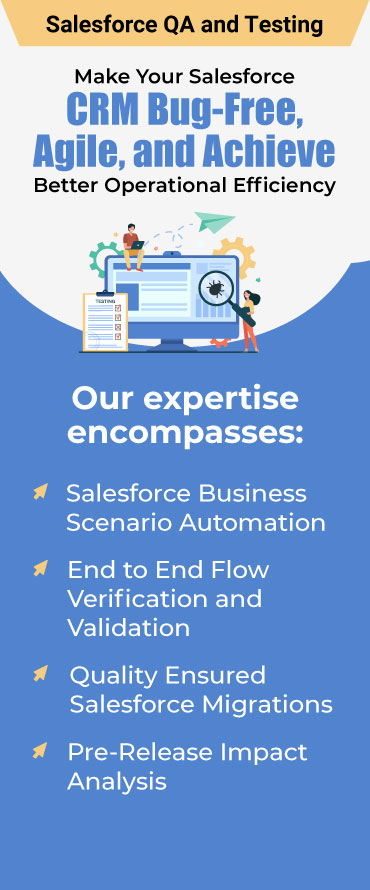Almost every day, we see new technologies and apps and their updates coming our way. There has been a rise in demand for faster release cycles for new apps that can sometimes impact the standard for quality software.
And for organizations to get more done in less time, all while keeping costs low can be an uphill battle, especially, with traditional ways alone. That’s why in today’s era, test automation is a must-have for organizations that wish to deliver quality software at velocity.
However, business decision-makers can be hesitant about the true value it delivers.
To break this uncertainty, they need a quantitative explanation to assess whether the return on investment (ROI) on automated testing processes is worth it.
In this blog post, we’ll dig into test automation – what value it brings and how you can calculate the ROI it brings to the table to, ultimately, make a business case for it.
The Value of Test Automation
In software development, speed and quality should go together. If your product/update isn’t released soon enough, maybe another competitor around the corner beats you to the finish line of meeting the customer’s expectation with something better.

Test automation can help you sprint ahead. So, let’s find out what benefits it can bring to the table. Test automation:
- Enables faster delivery by creating a tighter feedback loop between the development of code and the testing of the code and reducing delays.
- Tackles the regression challenge by replacing manual checks with automation checks. Also, you can run them more often for a lower cost and easily cross-check if regression has happened at any time.
- Leads to increased productivity because then your test engineers or QA testers don’t spend time on manual and repetitive testing.
- Reduces the average costs spent on testing hours.
For instance, with a platform like Salesforce, its extensibility and customizable integrations create a demanding QA and testing environment, and often, ensuring its operational competence is a challenge. Here’s an example of how expert-led automation testing can reduce backend operational costs, all while ensuring a better Salesforce Org.
Let’s get into ‘how’ you can crunch some numbers and calculate the ROI for automated testing.
How to Calculate Automated Testing ROI
Fret not, you won’t need AP math or scientific calculators to get to your ROI.
The way to calculate ROI is to divide the net profit from the transition by the total investment required. Your investment covers the resources, tools used, and framework set-up cost.
Here’s how it looks in an equation form:
ROI for automation testing = (Your investment value – Your investment cost)/Your investment cost
Now, let’s dive into the parameters required while executing this calculation.
1. Automating the Latest Tests
When you’re automating new tests, it’s key to guess the cost and time required to develop, execute, and maintain the test. Next, decide which tests you want to automate and which ones to keep manual. Additionally, while calculating ROI, don’t think of ROI as automated versus manual, and be sure to factor in the time required by your teams to conduct both.
2. Automating Older Tests
To build a business case for automation for your stakeholders, it is essential to calculate the cost of automating your prior test cases, that is your regression tests.
Regression testing helps ensure that any new changes to the software don’t create any new bugs in the existing modules. That’s why it is important to calculate the cost of automating old test cases. So, be proactive to integrate new automated tests with your existing regression testing suite.
3. Handling All the Environments
You don’t want to limit your end-user to use your product only on a specific platform. It is imperative that your product works in different environments.
Therefore, it is essential to consider the cost of setting up multiple environments, if you’d run tests in parallel, and if you’d require a device lab to ensure test coverage. This enables you to mitigate risks and the cost spent on fixing bugs. For instance, you’re testing an eCommerce website. So, calculate the cost of setting up devices and browsers for cross-browser testing.
4. Reutilizing Tests
When you can reuse existing tests, then why build a new one? Your core aim should be to keep track of the reusability of tests to avoid duplicating efforts. Calculate the time and effort you save by using reusing test cases.
5. Minimizing Leakage of Knowledge
For long-term ROI, calculating knowledge leakage cost is crucial. For instance, an experienced test engineer leaves your organization. The knowledge and experience regarding your testing framework or process are lost. Even with a new efficient tester, getting familiar with your testing process will take some time. To reduce this gap, ensure that all your frameworks, test processes, setup guides, etc are well documented.
Best Practices for Improving Automated Testing ROI
Now that you’re caught up with the ‘how’, let’s touch base on some best practices that our certified QAs swear by:

With a better understanding of your ROI from your test automation efforts, business decision-makers know the value that test automation delivers over time, while technical teams gain insight into the effects of test speed, robustness, and more.
Organizations that are embracing automated testing speed up workflows, maximize the efficiency of the quality assurance (QA) processes, and bring agility into the software development lifecycle (SDLC).
However, if you’re using a platform like Salesforce, your testing practices should be comprehensive and robust to incorporate the cloud, security standards, Apex programming, web services, and more.
Wish to bring the power of QA and testing to your Salesforce ecosystem? Talk to us.












